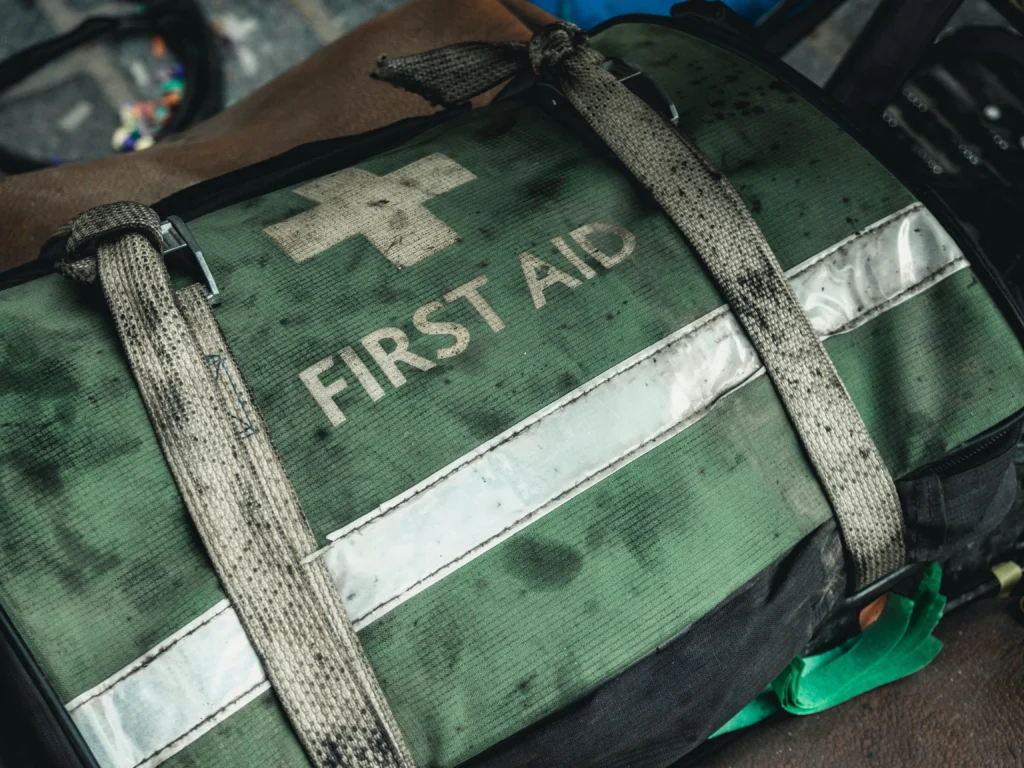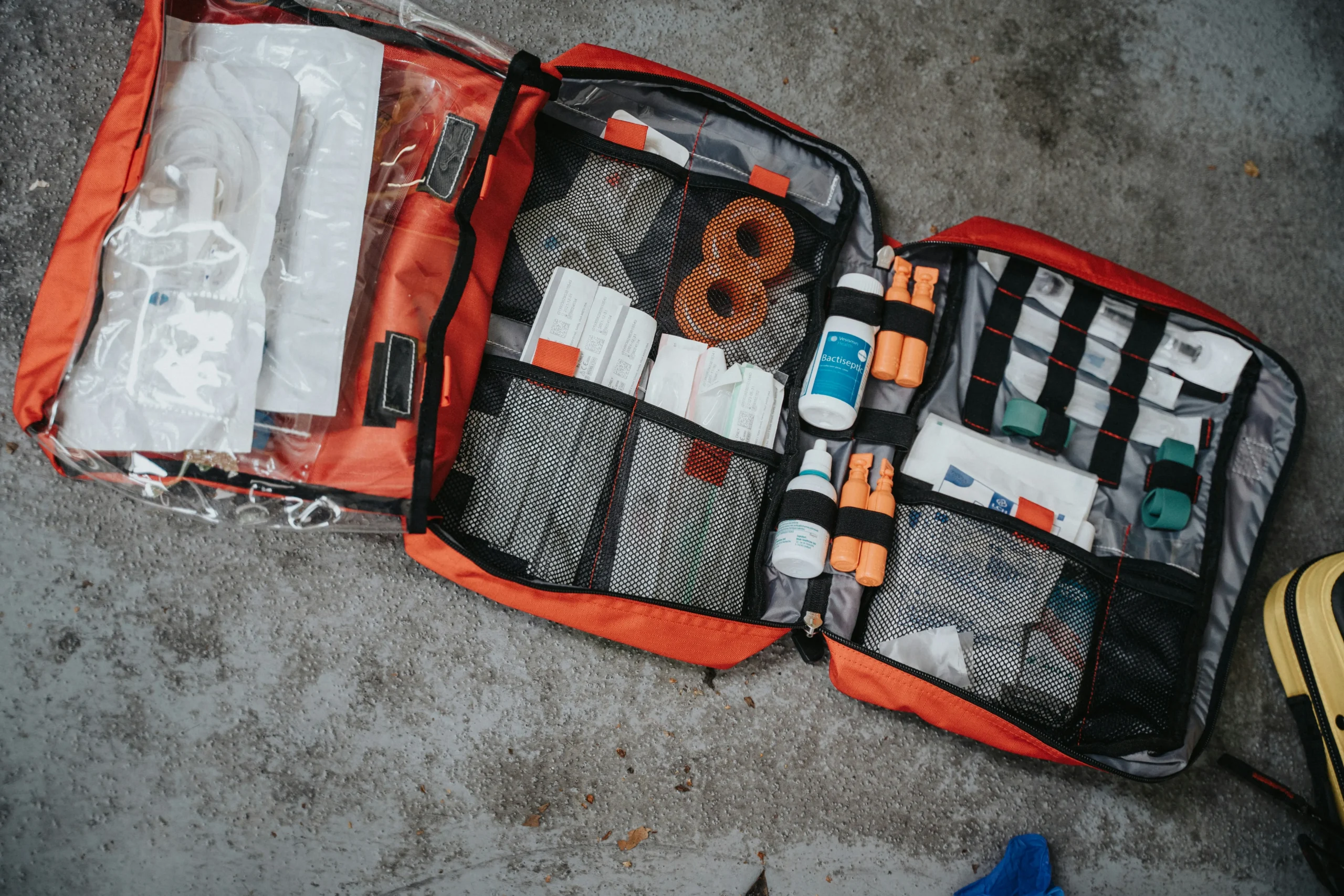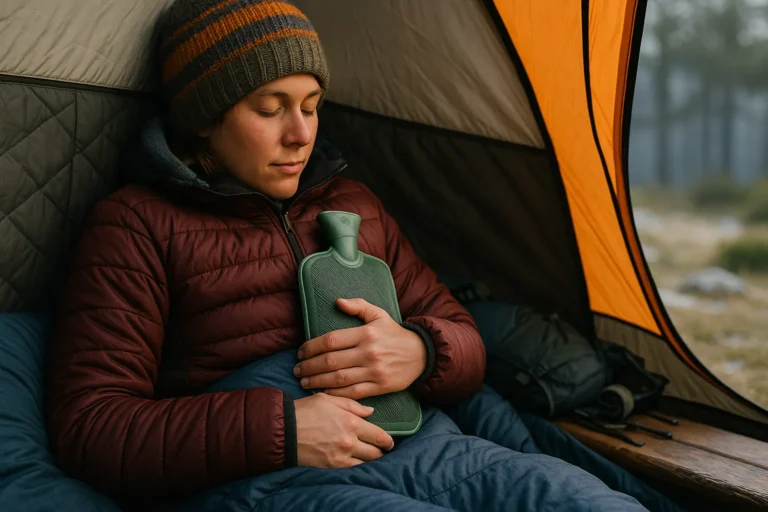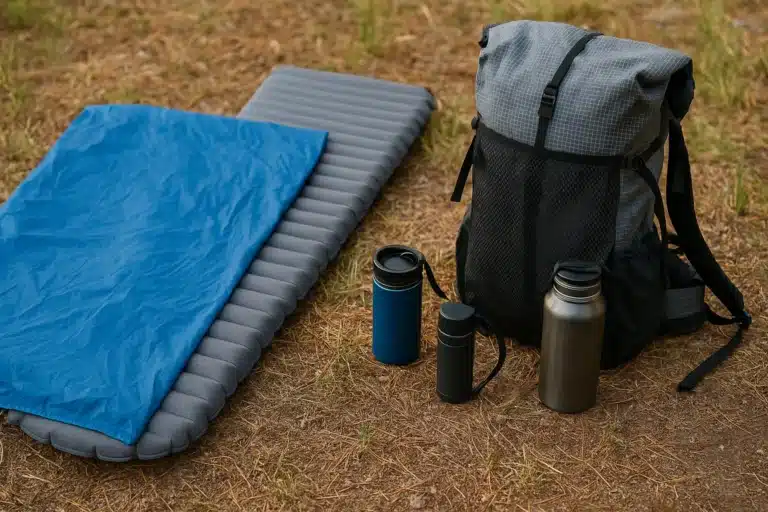Introduction
Emergencies rarely give you time to prepare — that’s why an emergency go-bag (also called a bug-out bag) is one of the smartest investments you can make for your family’s safety. Whether facing a power outage, wildfire, flood, or sudden evacuation order, having essential supplies packed and ready can save critical time, reduce stress, and potentially save lives.
As outdoor enthusiasts who’ve weathered our share of unexpected situations, we’ve developed this comprehensive guide to help you create an emergency go-bag that’s compact, complete, and tailored to real-world disaster scenarios. No fluff — just practical, field-tested advice from experienced preppers and emergency management professionals.
Quick Comparison: Essential Emergency Go-Bag Components
| Category | Essential Items | Why It’s Critical | Recommended Options |
|---|---|---|---|
| Water & Hydration | Bottled water, filter, purification tablets | Dehydration can occur within hours; clean water is your #1 survival priority | LifeStraw Personal Filter, Aquatabs Purification Tablets |
| Food & Nutrition | Energy bars, ready-to-eat meals | Provides calories and energy for 72+ hours | Mountain House Freeze-Dried Meals, CLIF Energy Bars |
| First Aid | Medical supplies, personal medications | Treats injuries and prevents complications | Adventure Medical Kits Ultralight, Personal Rx (3-5 day supply) |
| Light & Power | Flashlight, batteries, power bank | Maintains visibility and keeps devices charged | Streamlight ProTac Flashlight, Anker PowerCore 10000 |
| Documents | IDs, insurance info, cash | Essential for evacuation, assistance, and recovery | Waterproof document holder with copies of vital records |
| Clothing | Warm layers, socks, rain protection | Prevents exposure-related health issues | Merino wool base layer, waterproof shell jacket |
| Communication | Radio, whistle, emergency contacts | Helps get help or stay informed during outages | Midland ER210 Emergency Radio, Fox 40 Classic Whistle |
| Multi-purpose Tools | Multi-tool, duct tape, gloves | Adds adaptability for various scenarios | Leatherman Wave+, Gorilla Tape mini-roll |
Core Items to Include in Your Emergency Go-Bag
A well-built emergency go-bag balances weight, space, and critical needs. Here’s what experienced preppers and emergency services recommend including in your disaster preparedness kit:
Water & Hydration
Water is your absolute top priority in any emergency situation. The human body can only survive about three days without it.
- 1-2 bottles of water (16-32 oz each) or collapsible water container
- Portable water filter capable of removing bacteria and parasites
- Water purification tablets (backup for filter)
- Collapsible cup for collecting and drinking water
Food & Nutrition
Pack calorie-dense, ready-to-eat foods that require minimal preparation and have long shelf lives:
- High-calorie energy bars or meal replacement bars
- Ready-to-eat meals (MREs or freeze-dried options)
- Canned food with easy-open lids (if weight permits)
- Lightweight utensils: folding spork and collapsible cup
- Small bottle of high-calorie drink mix (electrolytes)
First Aid Supplies
A compact but comprehensive first aid kit can address most emergency medical needs:
- Adhesive bandages in various sizes
- Gauze pads and roll, medical tape
- Antiseptic wipes and antibiotic ointment
- Pain relievers, anti-diarrhea medication, antihistamines
- Personal prescription medications (3-5 day supply minimum)
- Emergency mylar blanket
- Tweezers, scissors, and safety pins
- Emergency first aid guide
Light & Power Sources
When the power grid fails, these items become invaluable:
- LED flashlight or headlamp (100+ lumens)
- Extra batteries in waterproof container
- Portable power bank (10,000+ mAh capacity)
- Hand-crank or solar emergency light (optional)
- Chemical light sticks (12-hour duration)
Important Documents & Financial Items
Keep these items in a waterproof container or sealed bag:
- Copies of identification (driver’s license, passport)
- Insurance information (home, auto, health)
- Emergency contact list (family, doctors, insurance)
- Cash in small bills ($50-100 recommended)
- Copy of house/car keys
- USB flash drive with digital copies of important documents
Emergency Clothing
One complete change of clothes, focusing on versatility and protection:
- Moisture-wicking base layer
- Extra pair of socks (wool preferred)
- Lightweight, packable rain poncho or shell
- Work gloves to protect hands
- Warm hat/beanie and bandana/buff
- Face mask (N95 if possible)
- Extra underwear
Communication Tools
Stay informed and signal for help when needed:
- Battery-powered or hand-crank emergency radio (NOAA weather alerts)
- Emergency whistle (louder and more reliable than shouting)
- Local maps with evacuation routes marked
- Small notepad and pencil
- Signal mirror or reflective material
Multi-purpose Essentials
These versatile items solve numerous problems in emergency situations:
- Multi-tool with knife, pliers, and can opener
- Duct tape (wrapped around a card or mini-roll)
- Paracord (25-50 feet)
- Work gloves for handling debris or hot items
- Small sewing kit for repairs
- Zip ties and carabiners
Hygiene & Sanitation
Maintain basic hygiene to prevent illness:
- Travel-size hygiene items (toothbrush, toothpaste, soap)
- Antibacterial hand sanitizer
- Wet wipes or biodegradable cleaning cloths
- Toilet paper (small vacuum-packed roll)
- Menstrual products if needed
- Compact microfiber towel
- Heavy-duty trash bags (multiple uses)
Tips for Building and Storing Your Emergency Go-Bag
How you organize and maintain your go-bag is just as important as what goes inside it:
- Choose the right bag: A durable backpack with comfortable straps, multiple compartments, and external attachment points works best for most people.
- Keep it lightweight: Your fully packed emergency kit should weigh no more than 10-15% of your body weight. If it’s too heavy, you’ll be tempted to leave it behind when you need it most.
- Pack modular: Use color-coded pouches or bags to organize items by category (first aid, food, documents). This makes finding specific items much faster during stressful situations.
- Prioritize accessibility: Keep the most immediately needed items (flashlight, whistle, essential medications) in outer pockets where they’re quick to access.
- Maintain regularly: Set calendar reminders to check your go-bag every six months. Replace expired food, medications, and batteries, and update any documents that may have changed.
- Customize for your household: Create separate go-bags for each family member, tailored to their specific needs, abilities, and local conditions.
Common Emergency Go-Bag Mistakes to Avoid
After analyzing hundreds of real emergency situations, we’ve identified these critical errors that could compromise your safety:
- Overpacking: Your emergency go-bag should be light enough to carry under stress. Don’t try to fit a full household inside; focus on true essentials for 72 hours.
- Neglecting personal needs: Generic preparation advice often overlooks critical individual needs like medications, mobility aids, or children’s comfort items. Customize your kit accordingly.
- Forgetting maintenance: Food, medicine, and batteries degrade over time. Without regular updates, your go-bag could fail when you need it most.
- Burying important documents: In an evacuation scenario, you may need to quickly prove your identity or medical needs. Keep these items easily accessible.
- Poor storage location: If your emergency go-bag is buried in the back of a closet or garage, it might be inaccessible during an actual emergency. Store it near an exit or in your bedroom.
Regional Considerations for Your Emergency Go-Bag
Tailor your emergency preparedness kit based on your geographic location and likely disaster scenarios:
For Hurricane and Flood-Prone Areas
- Extra waterproof dry bags for electronics and documents
- Personal flotation device that can attach to your bag
- Water depth measuring stick
- Solar or hand-crank radio with NOAA weather alerts
For Wildfire Regions
- N95 respirator masks (multiple)
- Fire-resistant document bag
- Bandanas that can be soaked for breathing protection
- Emergency fire shelter (if in extreme risk areas)
For Earthquake Zones
- Work gloves rated for handling debris
- Dust masks and eye protection
- Emergency whistle (structures may collapse)
- Crowbar or pry tool for escape
For Extreme Cold Climates
- Extra thermal layers and hand warmers
- Insulated water bottle (prevents freezing)
- Fire-starting materials (waterproof matches, lighter, tinder)
- High-calorie food items for increased cold-weather metabolism
Customizing Your Emergency Go-Bag for Special Needs
Not all emergency kits should be identical. Consider these special circumstances:
For Families with Young Children
- Comfort items (small toy, book, or blanket)
- Child-specific medications with dosing instructions
- Diapers, wipes, and formula for infants
- ID bracelets or contact information cards
- Activities to keep children occupied during waiting periods
For Seniors or Those with Medical Conditions
- Extra medications and copies of all prescriptions
- List of conditions, allergies, and doctor contacts
- Spare glasses, hearing aid batteries, or mobility aids
- Medical devices with backup power solutions
For Pet Owners
- Pet food (3-day supply)
- Collapsible water bowl
- Leash and collar with ID tag
- Copy of vaccination records
- Small pet first aid items
Conclusion: Why Every Household Needs an Emergency Go-Bag
An emergency go-bag isn’t just for “doomsday preppers” or those in high-risk disaster areas. It’s a practical insurance policy for anyone who wants to be self-sufficient during unexpected situations—from power outages to natural disasters. You may never need to use it, but if the time comes, having one ready could save precious minutes when every second counts.
Start simple, build smart, and keep it updated. A well-prepared emergency go-bag is one of the most important preparations you can make for yourself and your family—just in case.
Remember: The best emergency kit is one you’ve thoughtfully prepared before you need it, not one you’re frantically assembling during a crisis.
Frequently Asked Questions About Emergency Go-Bags
How often should I check and update my emergency go-bag?
Experts recommend checking your emergency kit every six months (when you change your smoke detector batteries is a good reminder). Replace expired food, medications, and batteries, and update any documents that may have changed.
How much should my emergency go-bag weigh?
Your fully packed emergency go-bag should ideally weigh between 10-15% of your body weight. For most adults, this means keeping the total weight under 10-15 pounds. Remember: the heavier your bag, the less likely you’ll be to grab it in an emergency.
Where’s the best place to store my emergency go-bag?
Store your go-bag in an easily accessible location near an exit. Good places include a front hall closet, by your bedroom door, or in a designated spot in your garage. Some people keep a smaller version in their car as well.
Is a pre-made emergency kit worth buying, or should I build my own?
Pre-made kits provide a convenient starting point but almost always need customization. Build your own if you want to ensure quality components and proper customization for your specific needs, or start with a basic pre-made kit and supplement the missing essentials.
How do I create a budget-friendly emergency go-bag?
Start with the absolute essentials (water, food, first aid, light, warmth) and add items gradually as your budget allows. Many components can be sourced from dollar stores or repurposed from camping gear. Focus on quality for critical items like water filters and first aid supplies.
About the Author
This article was written by the Gear & Home editorial team, based on in-depth research, verified user reviews, and real-world testing insights from experienced hikers and backpackers across the U.S.
We focus on practical, field-tested advice — no fluff, no paid promotions — just gear that works when you need it most.
Last Updated: April 2025









